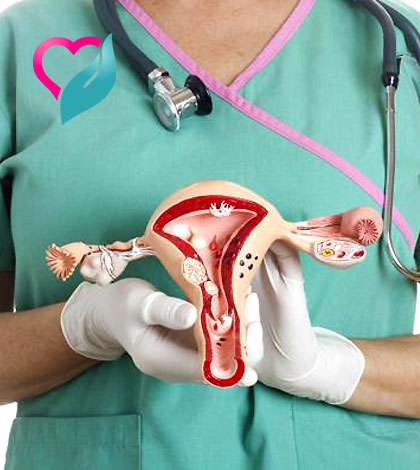Studies have shown that ovarian cancer can cause more deaths in women than any other gynecologic diseases.
[wp_ad_camp_1]
Similar studies have shown that women with ovarian cancer can survive for up to 5 years after the initial diagnosis, mainly due to the lack of early detection. Ovarian cancer in women is often times diagnosed at an advanced stage when it has spread beyond the ovaries; scientists are yet to find the best way to detect it at the earliest stage.
Ovarian cancer more likely occur in postmenopausal women (50-65 years age), but it can also occur at a younger age. A comparison study done in 2012 showed white women is at a higher risk for ovarian cancer followed by African-American, Hispanic, and then Asian women. It is the fourth most common cancer that affects women in the US with a high mortality rate.
[wp_ad_camp_4]
Ovarian cancer- Signs and symptoms
It is difficult to detect the early signs of ovarian cancer as the symptoms it shows are similar to that of less dangerous conditions like irritable bowel syndrome or PMS (premenstrual syndrome). A few symptoms that could be cautionary signs of ovarian cancer are written below
- Abdominal and pelvic pain.
- Early satiety or feeling full after a light meal.
- The urge to urinate frequently accompanied by pelvic pressure.
- Bowel and bladder habit changes.
- Abdominal bloating.
- Loss of appetite.
- Feeling nauseated and fatigued.
- Pain during sex.
[wp_ad_camp_2]
Ovarian cancer – Causes
The etiology for ovarian cancer is unknown, but studies show that there are few factors that could increase the chances of ovarian cancer
- Women who have been on contraceptive pills for longer periods of time are at a lower risk than women who have not taken contraceptives pills at all in their lifetime.
- Women who have never been pregnant are at risk for ovarian cancer than their counterparts who have been pregnant, at least once.
- Some studies show that infertility treatment can also be a reason, but it is still in debate.
- Women diagnosed with breast cancer are also at risk for ovarian cancer.
- Obesity can trigger ovarian cancer.
- Women with family history of ovarian cancer in their immediate relatives like mother and sister are at a high risk for ovarian cancer.
- Hormone replacement therapy (HRT) is known to put women at risk for ovarian cancer.
[See Also : Polycystic Ovarian Disease- A Real Threat to the next Generation ]
Tests for ovarian cancer
Blood test to confirm the presence of tumor marker CA-125, external and transvaginal ultrasound, laparoscopy, endoscopy, fluid aspiration, MRI and CT scan are the different cancer detection tests carried by doctors to confirm the diagnosis of ovarian cancer.
Stages of ovarian cancer: Ovarian cancer becomes full blown after going through four stages, the fourth stage being the most advanced.
- Stage 1: One or both the ovaries are diagnosed with ovarian cancer.
- Stage 2: The cancer spreads beyond the ovaries attacking the fallopian tubes and the uterus.
- Stage 3: The cancer spreads to the upper abdomen, abdominal lining and the lymph nodes in the groin and behind the womb.
- Stage 4: The cancer spreads far and wide attacking the vital organs like lungs and liver.
Treatment options
Treatments are many. Surgical removal of the uterus, tubes, and ovaries is one way of treating the cancer, and it is done by a gynecologic oncologist. It is also called hysterectomy. If the cancer has spread beyond the ovaries, then removal of the infected tissues are also carried out. Chemotherapy after surgery is a likely option to stop the recurrence of the cancer. Chemotherapy uses chemicals to targets cancer cells and destroy it. It obstructs the growth and division of cancer cells as well as destroys the cancer cells that surgery was unable to remove. Radiation therapy is another option but rarely used in the treatment of ovarian cancer.
[See Also : Yoga Cures Polycystic Ovary Syndrome ]
Anti-cancer diet
Fish
It is a well known fact that omega-3 (n-3) fatty acids (FA) present in fish keeps your heart healthy and prevents stroke, the same omega-3 fatty acids are also effective against cancer. Intake of fish like sardine, Spanish mackerel, and salmon which have omega-3 fatty acids in abundance can help fight against cancer causing cells.
Onion
Anthocyanins, myricetin, quercetin, and apigenin present in onions are four different natural cancer fighting flavonoid that is potent against cancer causing cells. A study from Switzerland has shown that it can reduce the risk by 73%. Raw red onions carry more than 60% cancer fighting properties than the white and yellow variety.
Other foods, fruits, and beverages which can prevent ovarian cancer are apples, oranges, grapes, tea, red wine, tomatoes, ginger, soybeans, and legumes etc, they are rich in flavonols which are known to reduce cancer risk by 31%.
[wp_ad_camp_3]
Image courtesy: warningsignsofcancer.com , ovariancancerday.org , bbci.co.uk , taste.com.au






























